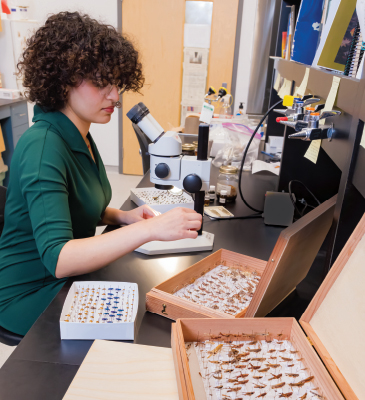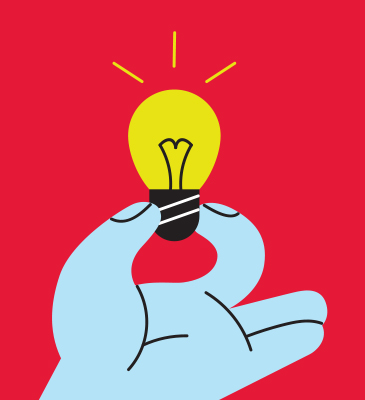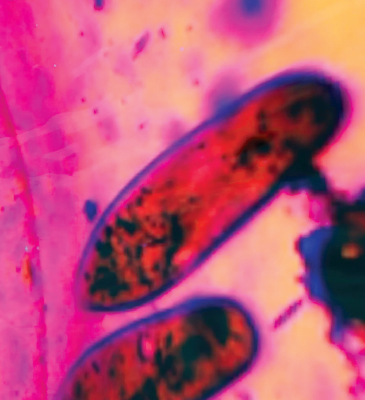York U curator champions Inuit food sovereignty through international collaboration
By: Corey Allen

An intricate beadwork of vibrant blues, brown and green depicts an Arctic shoreline, stretching from the sky down to icy hills and out to the sea, wrapped within a round border of caribou hair. The artwork is personal to award-winning Inuk artist and York University adjunct professor Laakkuluk Williamson Bathory, who crafted the scene to resemble her mother’s birthplace of Appamiut in modern day Greenland, a townsite she says was abandoned after residents were forcibly relocated in the 1960’s.
Bathory’s beadwork is part of a much larger collaborative research project facilitated by Anna Hudson, an art historian and curator at York, and funded by the Canada Inuit Nunangat United Kingdom Arctic Research Programme, or CINUK, an international collaboration between Polar Knowledge Canada (POLAR) and the UK.
Titled Inuksiutit: Food Sovereignty in Nunavut and the Co-production of Country Food Knowledge (IFSNu), the project explores the interconnectedness of traditional Arctic food to knowledge, language and cultural practices of Inuit Nunangat communities in Nunavut, particularly in Kinngait (Cape Dorset) and Mittimatalik (Pond Inlet).
In the Inuktut language, inuksiutit is a term for country food, translated as “that which makes us human.”
“The tradition of living off the land was made difficult for Inuit because of colonization, particularly with aggressive government-imposed settlement after World War II that disrupted communities and forced children to attend Western models of schools, including residential schools,” says Hudson, who is also a professor in the Department of Visual Art and Art History in the School of the Arts, Media, Performance & Design (AMPD).
“Our project is about advancing Inuit self-determination in environmental health policy and re-understanding the nutritional value of country food, whether that’s walrus, whale, seal or caribou, and remembering ways to eat them.”

The interdisciplinary project team, led by Hudson and Dr. Nancy Wachowich at the University of Aberdeen, is made up of Inuit and non-Inuit academics, Elders and youth, whose collective expertise spans various fields including Inuit nutrition, public health and epidemiology, social anthropology, and more.
The team hopes to translate Inuit country food knowledge through social media, visual and performing arts and Indigenous curatorial practice, and to digitally document food preparation and preservation to support food sovereignty and climate change adaptation.
Climate change has dramatically altered the Arctic’s temperature, with the region warming three times faster than the global average. These changing conditions affect the meat fermentation process, increasing the risk of foodborne botulism if not preserved properly.
“Sanctions, bans and wildlife management of country food are disconnected from Inuit ways of being and circumpolar cultural sovereignty,” says Hudson, who specializes in socially conscious and community-facing art practices. “Our project hopes to remind community members and non-Indigenous people of how beautiful country food is and how nourishing it can be, strengthening climate resiliency and advocating for Inuit food sovereignty, which the community has identified as a key step towards decolonization.”
One method to help remind people about the beauty and value of country food is through Williamson Bathory’s beadwork, which Hudson commissioned for IFSNu. The series of five beaded works, which Williamson Bathory describes as a labour-intensive and meditative project, is all about food, including the scene of her mother’s birthplace.
For that work, Williamson Bathory tanned the caribou hair herself, and caribou represents inuksiutit - or country food - a mainstay of her family’s diet.
“I am incredibly fortunate that my husband and I have been able to raise our family in Inuit Nunangat, to be on the land, to have a cabin and to fill our children’s bodies and minds with Inuit food and food thinking,” she says.
“Watching them figure out who hunted the food they eat and where they got it from is great satisfaction. My kids have formed a visceral connection to nuna (Inuit for land) and all it provides, and they are Inuit in the way that my family has always chosen to be.”

IFSNu is a three-year project, concluding in 2025, and will culminate in a book composed of recipes, written works, drawings, and art – including Williamson Bathory’s beaded works with accompanying prose.
Itis one of 13 projects that are part of CINUK, which involves Inuit Tapiriit Kanatami, United Kingdom Research and Innovation (UKRI), Polar Knowledge Canada (POLAR), the National Research Council of Canada, Parks Canada Agency and Fonds de Recherche due Quebec (FRQ).
Much of the aims of IFSNu will advance with Hudson’s next collaborative research project, called Curating Indigenous Circumpolar Cultural Sovereignty: advancing Inuit and Sámi homelands, food, art, archives and worldviews.
In 2022, the project received a nearly $2.5 million Partnership Grant from the Social Sciences and Humanities Research Council of Canada (SSHRC) over the next six years. Hudson says it will leverage curation to address the importance of cultural sovereignty for Inuit, Sámi and Alaska Native decolonization.
To learn more about CINUK, visit cinuk.org
Read more

York researcher traverses tick-infested terrain to beat back insect apocalypse
A PhD student at York University is studying the effects of climate change on insect decline

Young innovators look to commercialize research with York fellowship
Four budding researchers at York University receive support from VPRI to help bring their products to market

Connected Minds: one year later
Neural and Machine Systems for a Healthy, Just Society - York University’s major research initiative, funded in part by the Canada First Research Excellence Fund - celebrates its first year of achievements

York-Queen’s art project combines VR with Anishinaabe philosophy to explore water’s hidden depths
A York University professor has partnered with a Queen’s University professor to create an immersive 3D experience that sparks critical conversations about the global water crisis
